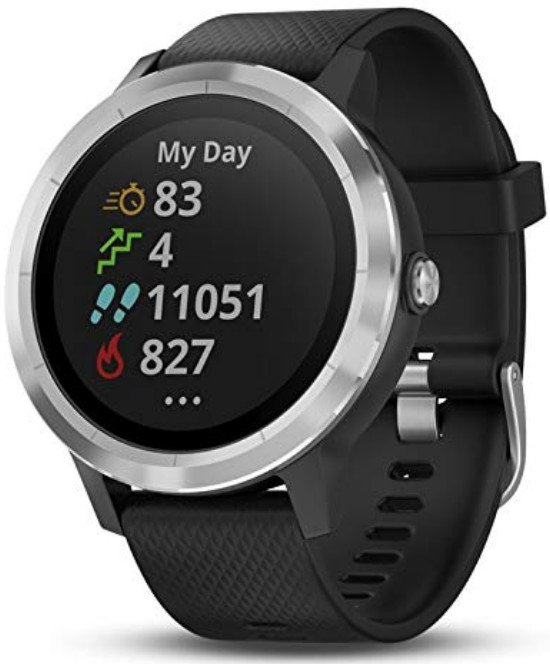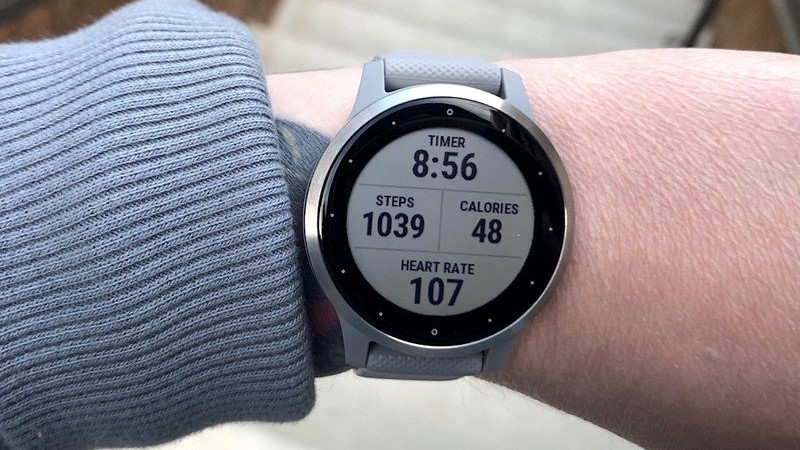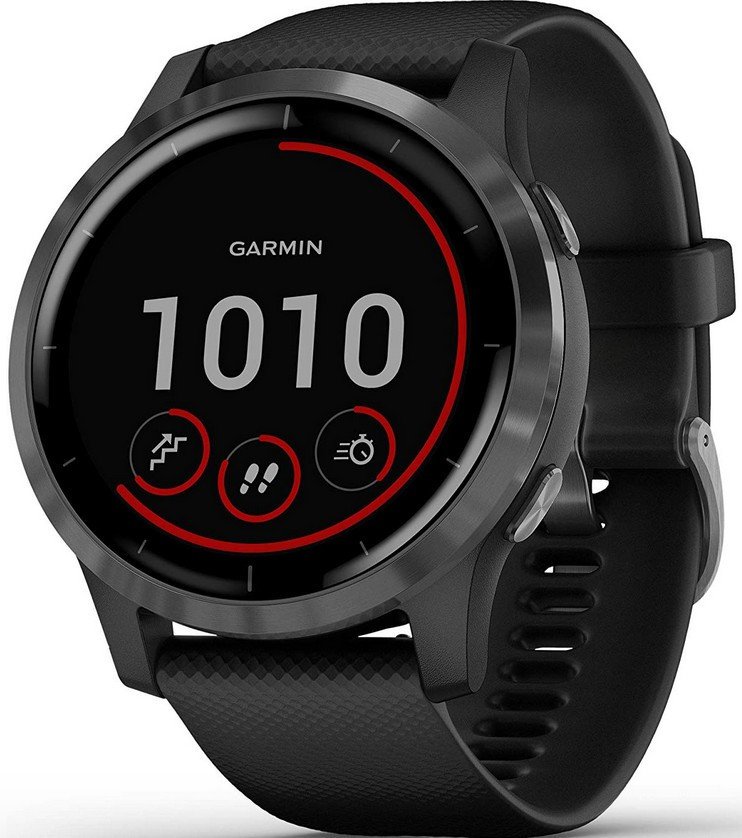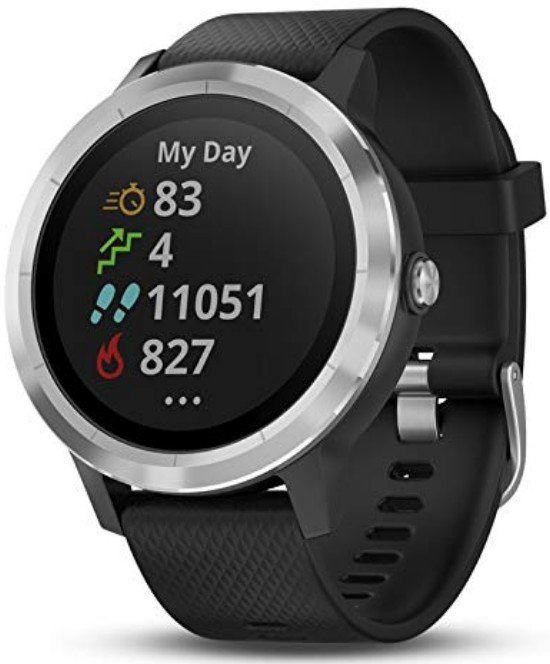Garmin Vivoactive 4 vs. Vivoactive 3: Which should you buy?
Choose the right wearable for you.

Fresh perspective
The Vivoactive 4 is changing the way you track, or more specifically, what you track. Aside from your typical fitness routine, you can now track hydration, respiration, blood oxygen saturation levels. Did we mention you also get on-screen workouts and music storage? It's pricy, but given the upgrades, it's worth it.
Pros
- GPS, HRM, NFC
- 20+ preloaded sports apps
- Body Battery, Pulse Ox
- Up to 8 days of battery life
- Music storage is standard
Cons
- Expensive
- 45mm has fewer color options

Classic outlook
The Vivoactive 3 was an instant hit when first released in 2017. Today, this smartwatch still has a lot to offer in terms of tracking and smart perks. You'll enjoy several preloaded sports apps, onboard GPS, Garmin Pay, heart-rate monitoring, activity/sleep, tracking stress monitoring, and more.
Pros
- GPS, HRM, NFC
- Activity/sleep tracking
- 15+ preloaded sports apps
- A week of battery life
- Reasonably priced
Cons
- Music storage isn't standard
- No on-screen workouts
- No Pulse Ox sensor
Garmin Vivoactive 4 vs. 3: Understanding the differences
While the predecessor is an impressive wearable, the Garmin Vivoactive 4 is better than the original. The Vivoactive 4 and Vivoactive 3 are some of the best Android smartwatches; whether you prefer advanced features or a budget-friendly price tag, one of these watches will meet your needs. Those seeking the latest and greatest features will likely prefer the newer Garmin Vivoactive 4.
From offering two different sizes to making music storage a standard feature, there are a lot of positive upgrades here. Both the Vivoactive 4 and 3 offer a solid fitness tracking experience that will satisfy the needs of most casual athletes. If you were a fan of the original Vivoactive 3, you'd certainly appreciate all the features that come with the newer model. It's not the cheapest Android smartwatch, but it may just be worth it for all that you get this time around. It's easily the better choice as far as features are concerned.
The Garmin Vivoactive 4 offers tons of new features

The Garmin Vivoactive 3 only comes in one size: 43mm. You'll be glad to know the Vivoactive 4 is available in two sizes: 45mm and 40mm. These models are known as the Garmin Vivoactive 4 and 4s, respectively. The only difference between these two models is the size and overall battery performance. It's also worth noting that the color options vary a bit. The 4S comes in Light Gold, Rose Gold, Slate, and Silver. However, the standard Vivoactive 4 only comes in Slate and Silver.
Like its predecessor, the Vivoactive 4 has a sunlight-visible, transflective display. However, you'll now have two buttons on your watch instead of one. The upper right button is for selecting, stopping, and starting, while the lower right button is for returning to the previous menu and lapping during workouts. There are multiple third-party Garmin Vivoactive 4 bands, but both models come with a silicone band.
| Header Cell - Column 0 | Vivoactive 4 | Vivoactive 3 |
|---|---|---|
| Dimensions | 45.1 x 45.1 x 12.8mm 40 x 40 x 12.7 mm | 43.4 x 43.4 x 11.7mm |
| Display | 1.3-inch transflective, 260x260 1.1-inch transflective, 218x218 | 1.2-inch trasnflective, 240x240 |
| Sensors | GPS, GLONASS, Galileo, HRM, altimeter, compass, gyroscope, Pulse Ox, accelerometer, thermometer | GPS, GLONASS, Galileo, HRM, altimeter, compass, accelerometer, thermometer |
| Battery | Smartwatch mode: 8 days (45mm) Smartwatch mode: 7 days (40mm) | Smartwatch mode: 7 days |
| Connectivity | Bluetooth, ANT+, Wi-Fi | Bluetooth Smart and ANT+ |
| Water-resistant | 5 ATM | 5 ATM |
| Touchscreen | ✔️ | ✔️ |
| Notifications | ✔️ | ✔️ |
| Garmin Pay | ✔️ | ✔️ |
| Music storage | ✔️ | ❌ |
| On-screen workouts | ✔️ | ❌ |
| Incident detection | ✔️ | ❌ |
Another notable difference to be aware of is battery performance. The Vivoactive 4 offers eight days of battery life in smartwatch mode and six hours in GPS and music mode. However, being slightly smaller, the 4S dips down to seven days in smartwatch mode and five hours in GPS and music mode.
Other than the physical differences, there are quite a few tracking improvements. For example, the Body Battery feature allows you to monitor your energy levels throughout the day. This will help you schedule workouts and rest at the ideal times. Speaking of which, you'll have plenty of options for workouts, including over 20 preloaded workouts, downloadable preset workouts through the Garmin Connect app, the ability to create customizable activities, and Garmin Coach training plans.
The Vivoactive 4 offers a Pulse Ox sensor for monitoring blood oxygen saturation levels.
The Vivoactive 4 offers a Pulse Ox sensor to monitor blood oxygen saturation levels and respiration tracking to monitor the number of breaths per minute. The combination of these two features leads to more insightful sleep data. You'll also have hydration tracking to manually log daily water intake and underwater wrist-based heart rate for swimming.
Get the latest news from Android Central, your trusted companion in the world of Android
Additionally, the Vivoactive 4 offers many on-screen workouts for strength training, cardio, yoga, and Pilates. You can follow along with your watch as it demonstrates the proper form and technique for a selected workout. It also provides you with breathwork activities designed to help you relax, focus, and reduce stress levels.
Last but not least, music storage is standard on both the Vivoactive 4 and 4S. This is a significant upgrade from the Vivoactive 3, which requires you to pay more for a model with this feature. You'll be able to download your favorite playlists and songs from third-party services such as Spotify, Deezer, and Amazon Music. This means you can enjoy phone-free music when you're working out. Needless to say, this is a highly-desired feature among fitness enthusiasts, and Garmin delivered.
The Garmin Vivoactive 3 is great for basics

If you're a beginner, on a budget, or don't want to spend a lot on a smartwatch, you might find the older Vivoactive 3 better. At its core, it's an excellent fitness smartwatch ideal for essential health and activity tracking. As long as you won't miss some of the premium perks available on the successor, you're getting an incredible value with the Garmin Vivoactive 3.
The Garmin Vivoactive 3 only comes in one size, 43mm. The watch comes in Rose Gold, Slate, and Silver. It's also easy to find third-party Garmin Vivoactive 3 bands when you feel like changing things up. Music storage isn't a standard feature, so you'll have to pay more for a model with that perk. The standard Vivoactive 3 gives you seven days of battery life in smartwatch mode and 13 hours in GPS mode.
As far as the similarities go, the Vivoactive 3 also offers built-in GPS, activity/sleep tracking, heart-rate monitoring, stress tracking, smartphone notifications, Garmin Pay, and 5 ATM water resistance. Of course, you'll also have access to some of the same workouts, including strength, cardio, elliptical training, stair-stepping, floor climbing, indoor rowing, and yoga.
It's worth noting that you will be missing out on a handful of the more advanced features. For example, the Garmin Vivoactive 3 doesn't offer a Pulse Ox sensor for blood oxygen tracking, Body Battery Energy Monitoring, breathwork, respiration tracking, or animated on-screen workouts.
Garmin Vivoactive 4 vs. 3: Which should you buy?
Not surprisingly, the price of the Vivoactive 3 has been significantly marked down since its successor was released. If you're content with the predecessor's more basic tracking and features, it's an unbeatable deal for those on a tight budget. It's also an ideal option for someone buying their first Garmin smartwatch and doesn't want to break the bank. It's not as advanced as the Vivoactive 4, but you still get a decent set of features at a very reasonable price.
However, if you're craving more details and don't mind spending a bit more for extra perks, the Vivoactive 4 is an amazing pick. It boasts many well-deserved improvements, including two size options, standard music storage, and a long list of tracking features that help you get a deeper look at your overall health and fitness. So if the price tag doesn't spook you, you'll be more than happy with the Garmin Vivoactive 4.

Track every little detail
If you liked the Garmin Vivoactive 3 but were left wanting more, you may want to think about upgrading. The new Vivoactive 4 tracks every little detail to give you a complete overview of your health and fitness.

Cover all the basics
Not too concerned about tracking every little detail? The Vivoactive 3 might be right up your alley. With that said, it lacks more detailed tracking, and you'll have to pay more for a model with music storage.

Courtney Lynch is a freelance writer at Android Central. She's obsessed with all things health, fitness, and music. At any given time, she can be found checking out the latest and greatest gadgets while simultaneously petting her dog and sipping iced coffee.
